Chopta is a great destination for anyone who loves nature and adventure. Many travelers choose a Chopta Tour Package or a chopta tungnath trek package because of the peaceful atmosphere and stunning mountain views this place offers. Whether you’re planning a trip with friends or family, Chopta provides a perfect mix of relaxation and activity, making it suitable for all kinds of visitors.
This hill station is located in Uttarakhand and is famous for its green meadows, tall deodar trees, and breathtaking views of snow-covered peaks like Nanda Devi and Trishul. These natural surroundings create an ideal setting for outdoor activities such as trekking, camping, and bird watching. For many, the main attraction is the trekking routes, especially the chandrashila summit trek and the tungnath temple trek. These treks offer not only impressive sights of the Himalayan ranges but also a chance to visit important religious sites like the Tungnath Temple, which is one of the highest Shiva temples in the world.
Chopta is also known for its rich biodiversity as it lies within the Kedarnath Wildlife Sanctuary. This makes it a top spot for wildlife lovers who might spot musk deer, Himalayan birds, and other native species during their visit.
Besides trekking, Chopta offers opportunities for camping under clear skies, which is a favorite activity in the summer and autumn months. Visitors often enjoy the starry nights, far away from city lights, making the camping experience all the more special.
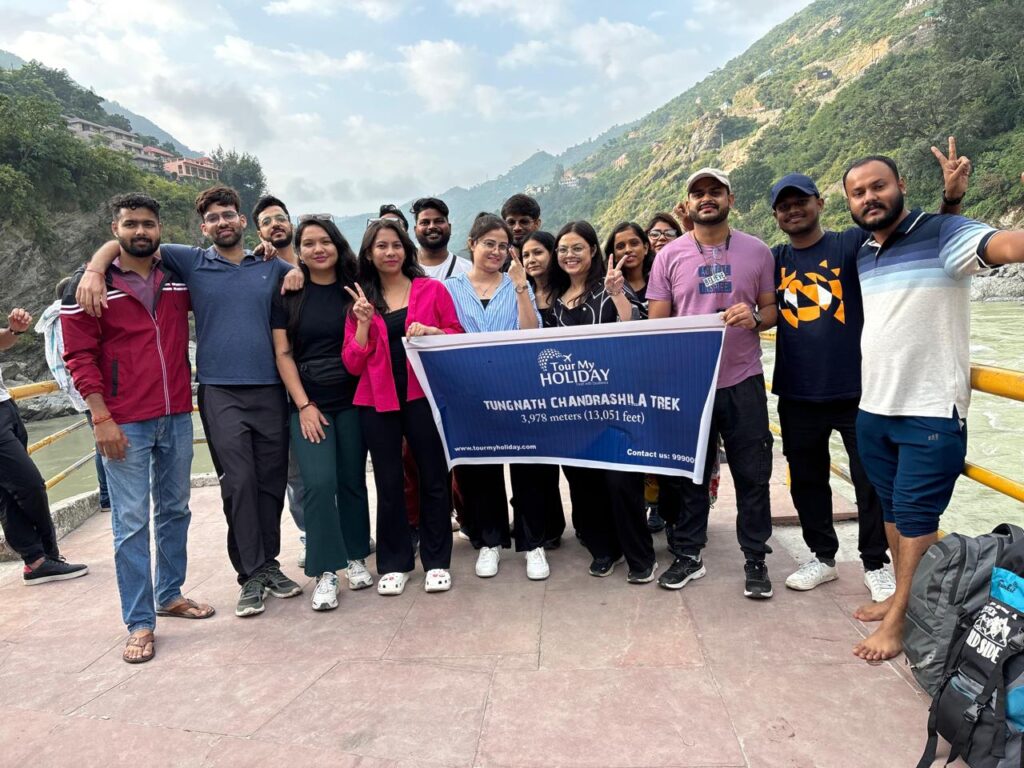
Weather & Climate in Chopta: Month-by-Month
Chopta, situated at an altitude of about 2608 meters in the Himalayas, experiences a varied climate throughout the year, making it a year-round destination for travelers and trekkers. Understanding Chopta’s weather month wise is essential for choosing the best time for trekking, sightseeing, and enjoying the natural beauty.
January & February:
Winters in Chopta are cold, with temperatures ranging from 3°C to 14°C during the day and dropping to as low as -2°C at night. January is the coldest month with occasional snowfall, ideal for snow lovers seeking a winter wonderland trek experience. Weather is crisp but trekking can be challenging due to snow and ice on the trails.
March to May:
This period marks spring and early summer when the weather gradually warms up with daytime temperatures ranging between 15°C to 29°C. The climate is pleasant and dry, making it the best season for Chopta trekking tours, especially the popular Chopta Tungnath and Chandrashila treks. The rhododendrons bloom, adding color to the scenic landscape.
June to August:
Monsoon arrives in Chopta bringing moderate to heavy rainfall, especially in July and August. Temperatures stay between 17°C and 31°C, with lush green surroundings and flowing waterfalls. Trekkers should expect wet and slippery trails during this period while monsoon Chopta packages attract nature lovers preferring solitude and vibrant flora.
September to November:
Post-monsoon months are among the best to visit Chopta. The weather is cool and clear, with temperatures ranging from 9°C to 27°C. Skies clear up, offering stunning views of peaks like Nanda Devi and Trishul, making this an ideal time for photography and trekking. November marks the onset of winter, with cooler nights and fewer tourists.
December:
Temperatures begin to dip, fluctuating between 4°C and 18°C. Days remain moderately cold, suitable for those wanting quiet treks and spiritual visits with fewer crowds. Snowfall may begin late in December, so travelers should come prepared with warm clothes.

Best Season: March to May (Spring & Early Summer)
The best season to embark on the Chopta trek and Tungnath trek is from March to May, which corresponds to the spring and early summer months. During this period, the weather is pleasant and ideal for trekking, with mild temperatures ranging between 8°C and 15°C. The snow starts melting, revealing lush green meadows adorned with blooming rhododendrons, creating a picturesque landscape perfect for nature lovers and photographers. This season also offers clear skies, making the panoramic views of the Himalayan peaks, including Nanda Devi and Chaukhamba, particularly stunning.
The spring and early summer season is favored by many travelers booking Chopta trek packages and Tungnath temple treks because the trails are accessible and safer compared to the winter months when heavy snowfall can block paths. Additionally, this period sees fewer landslides than the monsoon months, providing a more comfortable and enjoyable trekking experience. The combination of favorable weather and vibrant natural beauty makes March to May the peak season for both the Chopta trek and Tungnath trek, attracting families, beginner trekkers, and adventure enthusiasts alike.
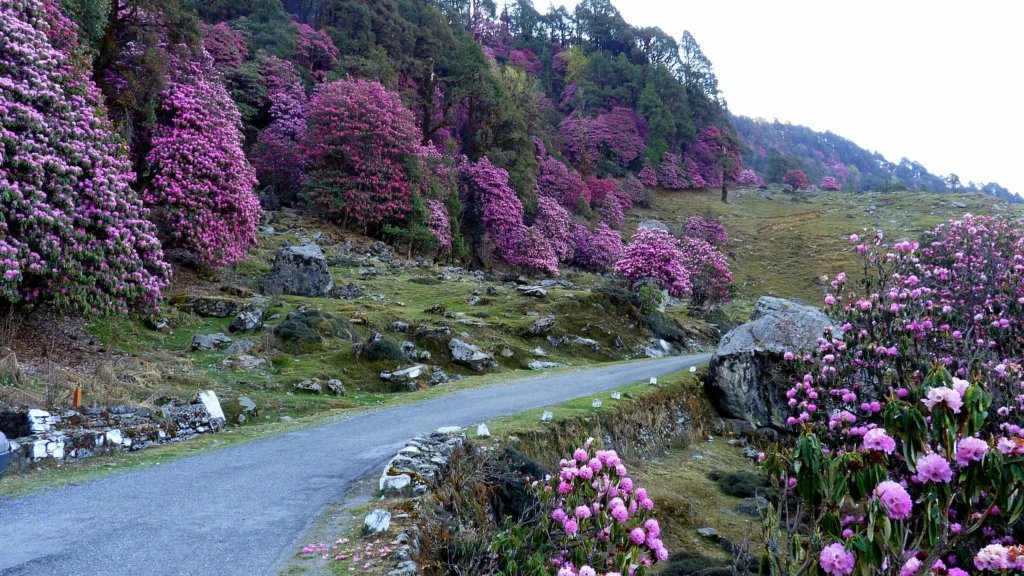
June to August: Monsoon Season and Rainy Adventures
The Chopta Chandrashila trek during monsoon season is a mesmerizing experience, turning the region into a lush, green paradise filled with cascading waterfalls and blooming wildflowers. This time of year offers fewer crowds and a peaceful atmosphere, making it perfect for beginners wanting their first mountain adventure. While the trails can be slippery and the weather unpredictable, the moderate difficulty of the Chandrashila trek and the well-marked paths help ensure safety for trekkers who come prepared.
The monsoon rains awaken the forests, and the sight of clouds drifting around the peaks creates an almost mystical ambiance. Many Chopta Trekking Tour Packages adjust their itineraries to accommodate the monsoon, providing appropriate gear, guided support, and comfortable accommodations that help trekkers enjoy the season’s unique charm. With proper preparation, the monsoon months provide a rewarding and enchanting trekking experience that highlights the serene spirit of the Himalayas
September to November is the ideal time for the Chopta trek package because the weather is perfect for trekking with clear skies and comfortable temperatures. During these months, Chopta transforms into a beautiful autumn landscape with vibrant colors covering the meadows and forests. The panoramic views from the trekking trails are crystal clear, allowing hikers to enjoy majestic sights of snow-capped Himalayan peaks like Nanda Devi, Trishul, and Chaukhamba. This season offers dry and safe trails, making it easier and more enjoyable to explore.
The Chopta trek package during this period also provides the chance to witness stunning sunrises from the Chandrashila summit, a highlight for many travelers. The peaceful atmosphere and fewer tourists create a serene trekking experience amidst the colorful surroundings. Wildlife sightings, including the Himalayan Monal bird, are more common as well, enhancing the connection with nature.
Additionally, autumn is an excellent season for cultural experiences, as local festivals often take place near the Tungnath temple, adding a spiritual dimension to the trek. Overall, September to November with the Chopta trek package is favored by trekkers and nature lovers who want to experience the best weather, nature’s vibrant hues, and breathtaking mountain panoramas in the Himalayas.

December to February: Winter Wonderland & Snow Treks
The winter months transform Chopta and the Tungnath-Chandrashila trek route into a stunning snow-covered paradise. From December onwards, fresh snowfall blankets the pine forests, making the trails glisten under clear blue skies. January typically experiences the heaviest snowfall, with deep snow layers and icy patches, turning the trek into a true Himalayan winter adventure. Temperatures can dip below -10°C at night, requiring proper winter gear such as insulated jackets, gloves, waterproof boots, and trekking poles to navigate icy and slippery sections safely.
In February, the cold starts to ease slightly with longer sunshine hours, making trekking conditions more comfortable while still enjoying snowy vistas. The sunrise trek to Chandrashila peak during this period is especially magical, offering breathtaking 360° panoramic views of snow-capped Garhwal Himalayan peaks. Winter treks on this route are moderate in difficulty but demand good fitness and preparedness for cold winds and snowy terrain. Guided packages from Delhi often include camping options, meals, warm accommodations, and expert guides to enhance safety and enjoyment during these months.
Overall, winter is ideal for adventure seekers and nature lovers who want to experience Chopta’s unique snowy landscape, serene environment, and peaceful Himalayas away from the crowded tourist seasons.

Month-Wise Temperature and Rainfall Guide for Chopta
Chopta, nestled at an altitude of around 2600 meters, experiences significant variations in temperature and rainfall throughout the year, making it important to plan trips carefully depending on what kind of weather and trekking experience you want. A typical Chopta trekking tour package takes these seasonal changes into account to ensure comfort and safety.
From March to May, spring and early summer warm the region, with temperatures typically between 8°C and 20°C. This season offers pleasant days and cool nights, ideal for those opting for Chopta Tungnath trek packages, as weather conditions favor clear skies and blooming rhododendrons. This period is considered the best time for trekking and sightseeing with minimal rainfall.
June to September marks the monsoon season, bringing moderate to heavy rainfall, with Chopta receiving abundant showers mostly in July and August. Temperatures during this season hover between 15°C and 20°C. While the rains enhance the greenery and natural beauty, trekking during these months requires extra caution due to slippery trails and the chance of landslides. Many Chopta tour packages avoid heavy trekking in monsoon, offering instead nature walks and more relaxed sightseeing activities.
October and November bring the post-monsoon or autumn season, ideal for trekking with cooler and clearer weather. Temperature ranges fall between 10°C and 15°C, and rainfall decreases significantly. The skies clear up, offering spectacular views of the Himalayas, perfect for Chandrashila summit trek and other adventurous routes included in Chopta trekking tour packages.
Winter from December to February is cold, with temperatures often dipping below freezing, reaching as low as -15°C at night. Snowfall can block some trails, making the Chopta Tungnath trek and other packages more challenging and suited for experienced trekkers. Travelers during this season must be prepared with adequate warm clothing and gear.
When planning your Chopta trekking tour, understanding the right season is vital for a memorable experience. The months from March to June and September to November offer the best conditions for the Tungnath trek, with mild weather and safe trails. This season is perfect for witnessing vibrant flowers and breathtaking mountain views.
Summer is ideal for families and beginners who want to enjoy nature without harsh conditions. During the monsoon, trekking becomes challenging due to slippery paths, but the lush greenery adds to the charm of Chopta. Many avoid the rains, but some adventurous trekkers still take on the Tungnath temple trek with proper gear.
Autumn presents clear skies and colorful foliage, making it the perfect time for the Chopta trekking tour to Chandrashila summit, where panoramic views of the Himalayas are unmatched. Winter brings snow and frost, transforming Chopta into a white wonderland best suited for experienced trekkers.
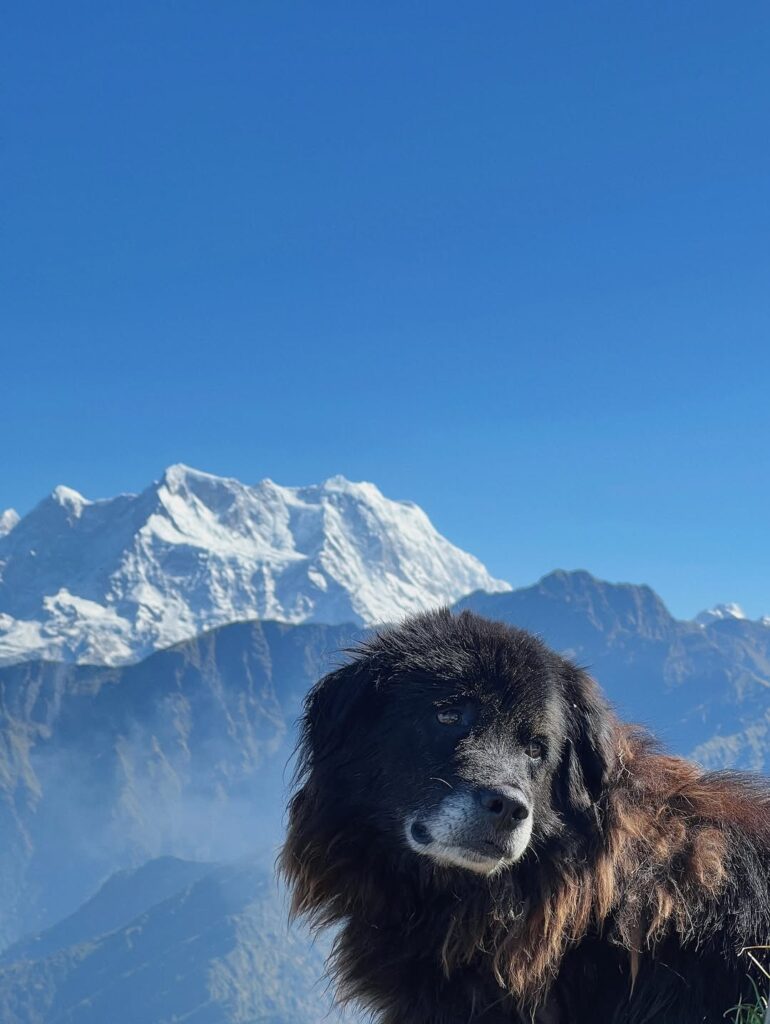
Packing Essentials for Each Season
When preparing for your chopta tungnath trek package, packing the right clothes and gear is essential for comfort and safety on the mountain trails. Start with good-quality, broken-in trekking shoes that provide ankle support and grip, crucial for the sometimes rocky paths on the trek. A medium-sized backpack to carry your daily essentials like water, snacks, sunscreen, and a basic first aid kit keeps everything organized.
For the spring and summer months, lightweight, breathable clothes, along with a warm jacket for early mornings and evenings, are perfect for the chopta trekking tour package. Since temperatures can vary greatly, layering is key. During monsoon, a waterproof rain jacket and rain cover for your backpack are must-haves, as trails can get slippery and wet.
If you book a Chopta Tour Package From Delhi in winter, pack thermal innerwear, gloves, a woolen cap, and heavy-duty jackets to stay warm against freezing temperatures and snow. Carrying extra pairs of moisture-wicking socks and gloves helps keep you dry and comfortable. Don’t forget essentials like sunglasses to protect from UV rays at high altitude and personal medicines.
Many Chopta tour package provide meals and some gear, but having your own water bottle, headlamp, trekking poles, and snacks can significantly enhance your experience. Organizing your pack according to the season and trek duration ensures you stay prepared and enjoy your Himalayan adventure to the fullest, whether visiting Tungnath temple, conquering Chandrashila summit, or simply exploring Chopta.
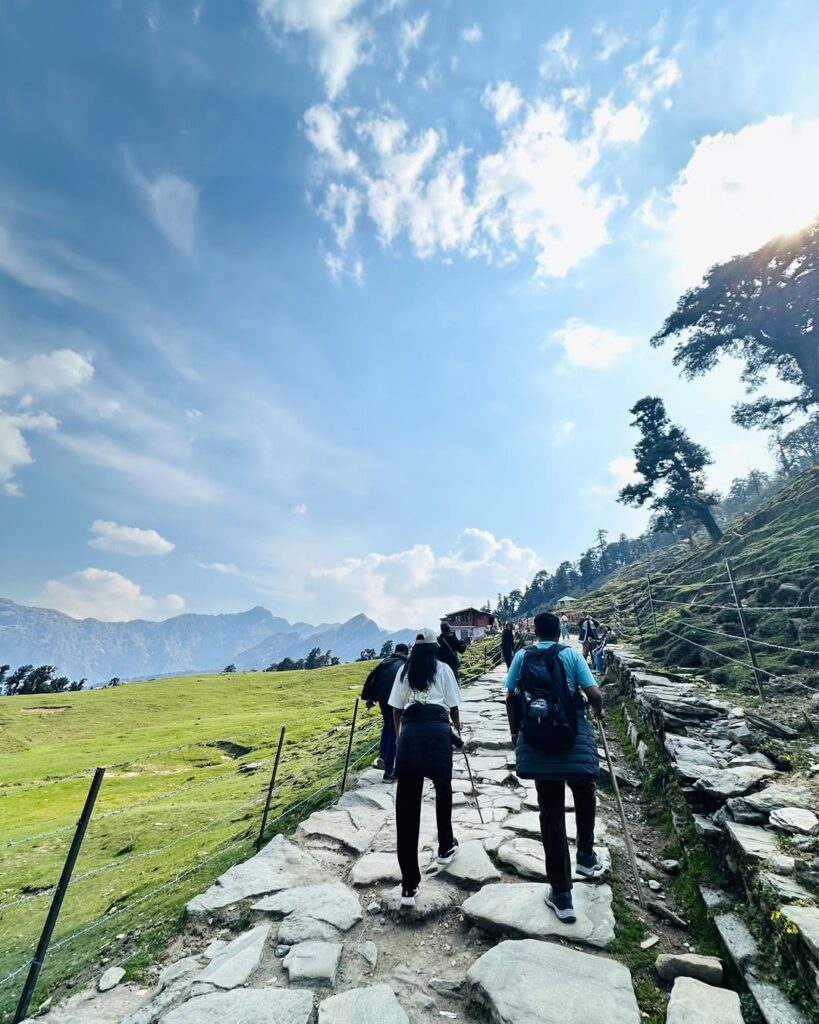
Chopta Festivals and Events Calendar
Chopta is not only a paradise for nature lovers but also a hub of rich cultural traditions that enhance the trekking experience. The area comes alive during the famous Nanda Devi Mela, celebrated with songs and rituals honoring the goddess Nanda Devi. This festival adds a vibrant touch for those on a Chopta trekking tour package, offering a glimpse into local beliefs and festivities.
The spiritual heart of Chopta’s festivals is the Tungnath temple trek area, where Mahashivratri is observed with great devotion. As the highest Shiva temple in the world, Tungnath hosts special prayers and gatherings, drawing pilgrims and trekkers alike. Many travelers plan their trek to coincide with this special occasion for a deeply moving cultural experience.
Local entertainment includes the Pandav Leela, a dramatic enactment of the Mahabharata, performed after the harvest. This folk theatre highlights the region’s ancient stories and is sometimes included as a cultural feature in Chopta tour packages.
Popular Indian festivals such as Dussehra and Diwali are celebrated with enthusiasm in the nearby villages. These events are accompanied by fairs showcasing handicrafts and traditional foods, allowing visitors to enjoy the authentic culture while on a Chopta tour package or other trekking tours.
In winter, the opening and closing ceremonies of the Tungnath temple draw many visitors, marking sacred moments filled with rituals and prayers. Planning a trek with these festivals in mind enriches the overall adventure, blending natural beauty with cultural heritage, making any Chopta trip truly unforgettable.
This narrative uses just one keyword, Tungnath temple trek, yet covers the festive spirit around Chopta’s trekking experience richly.
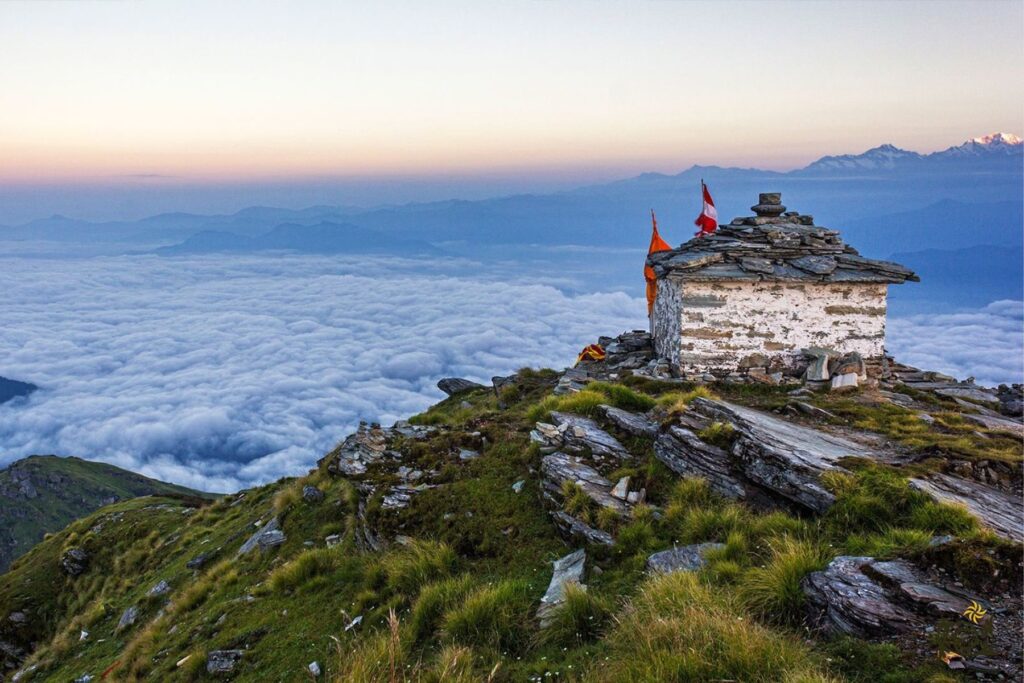
Frequently Asked Questions:
- What is the distance and duration of the Chopta to Tungnath trek?
The trek is approx 3.5 to 4 km one way and usually takes around 2 to 3 hours depending on fitness level. - How difficult is the Chopta Tungnath trek?
It is considered a beginner-friendly trek with a well-marked path and moderate uphill climb. - When is the best time to do the Tungnath temple trek?
The best time is from March to June and September to November for clear weather and safe trail conditions. - Is the temple accessible year-round?
No, Tungnath temple remains closed in winter (Nov-April) due to heavy snow; the deity is shifted to Ukhimath. - Can I do the trek as a day trip from Chopta?
Yes, many trekkers complete the trek to Tungnath and back as a day excursion. - What festivals are celebrated in Chopta during trekking seasons?
Notable events include Nanda Devi Mela and Mahashivratri celebrations at Tungnath temple. - How do I reach Chopta for the trek?
Chopta is accessible by road from cities like Delhi, Rishikesh, and Haridwar, via bus or private transport. - Are guides required for the Chopta to Tungnath trek?
The trail is easy to navigate, and guides are not mandatory, though local guides can enhance the experience. - What accommodation options are available in Chopta?
There are guesthouses, campsites, and homestays available for overnight stays in Chopta. - What should I carry for the trek?
Essentials include warm clothes, good trekking shoes, water bottle, snacks, and rain gear during monsoon. - Can the trek be combined with Chandrashila summit?
Yes, many trek packages include a further 1.5 km trek from Tungnath to the Chandrashila summit. - Are there any local fairs or cultural events during the trek?
Yes, local fairs and traditional performances like Pandav Leela occur seasonally, enriching the cultural experience.

